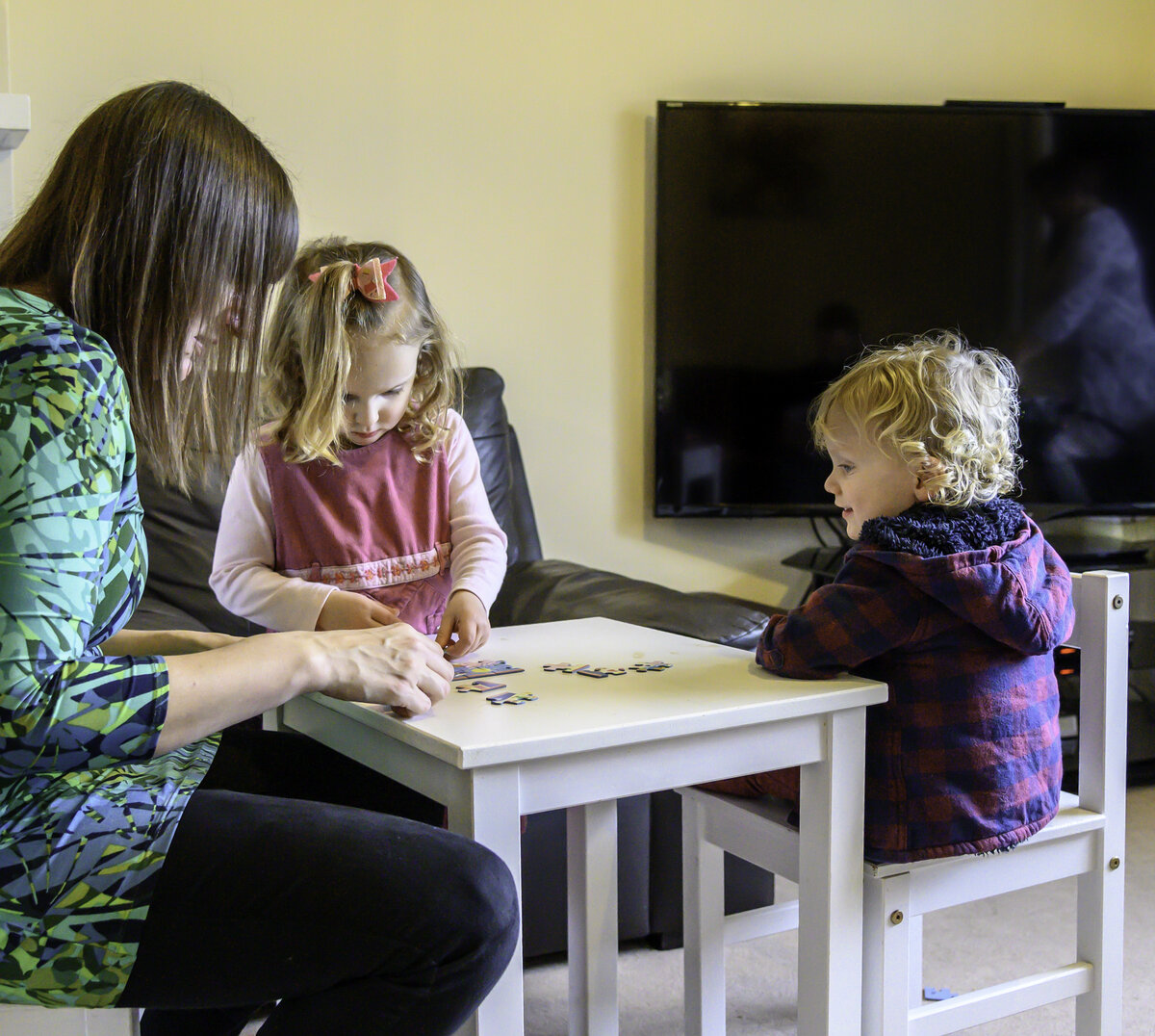James Frankish and pica: learning the lessons from his life and death
Published on 01 April 2019
Author: Dr Liz Shea, Mark Frankish, Sarah Frankish
Dr Liz Shea from the Birmingham Food Refusal Clinic tells the story of James Frankish, a young autistic man who sadly died from issues related to pica. After explaining what pica is, Dr Shea then explores James' story and the lessons that need to be learnt as a result of his death.
I never had the opportunity or good fortune to meet James, but I heard a lot about him from those that knew him best: his family and those who cared for him in his home. I quickly heard how full of life he was, how challenging his behaviour could be, and, most of all, how much he was loved. Very sadly I discovered all of this after he died, and during the inquest into his tragic and untimely death in 2016.
This article is written at the request of, and in collaboration with, James's parents and family. It has a single purpose: to educate the autism community about what led to his death, namely his pica (or the eating of non-foods, see box out). By recalling the events that led to his death, we hope to both honour James’s memory and take a step towards preventing what happened to him afflicting anyone else.
It should be said at the outset that the Coroner’s Inquest into James’s death (which took place in 2017) recorded a ‘narrative’ conclusion due to the many and complex factors involved. In addition, it highlighted lessons to be learnt, some of which this article will examine. This article accompanies another on practical guidelines for the management of pica.
Out of necessity, some disturbing details are recounted in this article. These are not intended to shock, but rather to tell James's story and emphasise the very real dangers pica behaviour can present to the individual who engages in it. We hope that anyone who is negatively affected by the content and/or the circumstances of James’s death will be able to seek appropriate support1.
What is pica?
Pica is the Latin name for ‘magpie’, a well-known bird that reputedly collects and eats almost anything. Pica as a medical term refers to the persistent eating of non-nutritive, or non-food, items (American Psychiatric Association 2013).
Cases of pica are reported in many different groups including pregnant women and in people with a learning or intellectual disability and/or are autistic. In this latter group pica is reported to be often more severe (Matson et al, 2011). Pica is also reported across the world, and throughout history, with stories of people eating coal and earth documented as far back as Roman times (Parry-Jones & Parry-Jones, 1992).
People engaging in pica often have highly specific preferences for consuming items such as:
- soil
- paper
- cloth
- plants
- plastic
- chalk
- paint
- hair
- wood.
They are often very motivated in their attempts to obtain their chosen material.
We do not know what causes pica. Theories include:
- a diet that lacks certain minerals
- environmental deprivation
- appetite dysfunction
- the sensory or automatic consequences of eating the item itself.
What we do know is that pica can be compulsive, very dangerous and preventing it can also be very difficult (Sturmey & Williams, 2016).
About James
James Frankish was autistic, had a learning disability and pica, all of which were considered to be ‘severe’. Throughout his life, many of his behaviours had been described as very ‘challenging’ and included self-injury and anxiety. As a result, James was unable to keep himself safe and required a significant amount of care.
A few months prior to his death, James had moved to a new residential setting and he was reportedly settling in. This was a very positive move for James as previously two other (brief) adult placements had not worked out.
James was 21 when he died. The cause of his death was recorded by HM Coroner as the ‘obstruction of his airway and/or cardiac arrest’. In addition, this factor was identified by the Coroner as resulting from James vomiting up plant material that he had eaten at an unspecified point prior to his death.
Following a post-mortem examination, it was also revealed that James had had a hard mass of plant material in his stomach, the medical term for which is a ‘phytobezoar’. A bezoar is a mass of indigestible material in person’s stomach or intestine – phytobezoars are indigestible food fibres.
This phytobezoar was also found to have been a likely factor in James’s death, as it would have caused irritation and bleeding that in turn caused him to vomit. The Coroner’s Inquest concluded it was not possible to know exactly how long the phytobezoar had been present in James’s stomach, but that it was likely to be the result of James’s compulsive habit of eating plants, particularly conifer leaves.
Different types of ‘bezoar’ are globally documented, although they are medically rare. They are usually the result of the ingestion (either deliberate or accidental) of indigestible material such as plant material, cloth or hair (Tokue, 2015). They typically cause the person to exhibit symptoms such as:
- vomiting
- abdominal distension
- fever
- pain
- weight loss
- unusual agitation or distress (Conyers & Efron, 2007).
However, bezoars can also present with few such symptoms, and for people with intellectual disabilities, the physical signs of any related illness may be masked or not picked up due (for example) to the person being non-verbal (Byard, 2014).
This, unfortunately, appeared to be the case with James. Shortly before his death he was reported by his carers and family to be well and happy, and there was no reason to suspect that he had what we now know to be a life-threatening mass in his stomach. Indeed, for James, previous medical investigations, which were often carried out after hospital visits to treat childhood episodes of pica, had not highlighted any areas of concern. Quite simply, no one knew the phytobezoar existed, or even had a reason to look for it.
Understanding of pica
Pica behaviour is still, unfortunately, very poorly understood and there are, as yet, no national guidelines on its identification and management.
Pica carries significant health risks which include:
- poisoning
- oral and dental health problems
- infections
- intestinal obstruction
- gut or bowel perforation (Stiegler, 2005).
It can also be extremely dangerous – one episode of pica can cause harm or death (Hagopian, 2011), although there are currently few recorded incidents.
The rarity of severe cases and the lack of expertise in managing them means that many families, carers and health professionals feel isolated and are at a loss to know what to do to keep their loved one, client or patient safe. For health professionals in particular, the skills to manage severe forms of pica are often lacking, largely because they may never have met another person with similar behaviours.
This appeared to be the case with James. Due to a lack of knowledge of the potential severity of his particular pica, James’s family, his carers and health professionals were not fully aware of the seriousness of his condition, particularly that his history of eating plants could lead to a bezoar. However, we must also acknowledge that even when a full medical history is known, stopping a person from engaging in pica behaviour can be extremely difficult. James loved to be outdoors and would go to great lengths to obtain and eat leaves, despite attempts to prevent this.
"Never in any circumstances assume that pica is a ‘safe’ behaviour".
Lessons to be learnt
One of the first lessons we should, and must, learn from James’s tragic death is to never in any circumstances assume that pica is a ‘safe’ behaviour.
Rather, it must always be considered a potentially life-threatening condition.
Other lessons to be learnt from James’s death include the importance of effective risk management, including careful consideration of the pica items being eaten and judgement of the harm these could cause and, wherever possible, prevention of access to those items. However, James’s case again highlights that this is not simple or easy. Removing potential pica items from James had previously caused him a great deal of distress, as they were clearly a source of comfort to him – taking them away only served to increase his anxieties and distress. Any plan for pica management must, therefore, take into account all the risks to a person’s physical and mental health and well-being.
Monitoring health
The importance of monitoring person's health can also not be over-stated. This may include, for example, regular heath checks such as blood tests or CT (Computerised Tomography) scans. The latter in particular is reported to be an effective way of identifying the presence of some bezoars (Iwamuro, 2015), although certain materials may not show up on such scans so other methods of identifying their existence may need to be found.
Unfortunately, we will never know whether a medical procedure such as a CT scan might have prevented James’s death, but his upsetting case means we should consider undertaking one for anyone with similar behaviours, without question.
Future hopes
It is hoped that in the future we will have more detailed information on how to work effectively towards ensuring the safety of people who engage in pica, particularly for autistic people. The need for national guidance on the management of pica following HM Coroner’s recommendations is now unquestionable, and is hoped this will be forthcoming soon.
Our accompanying article to this one concentrates on the management of pica with the aim of increasing the knowledge of how families, carers and health professionals can manage this potentially life-threatening condition.
We hope we have done justice to James’s memory by telling others the moving story of his life and tragic death.
Dedicated to the memory of James Frankish (1994-2016) and written with heartfelt thanks to his family.













